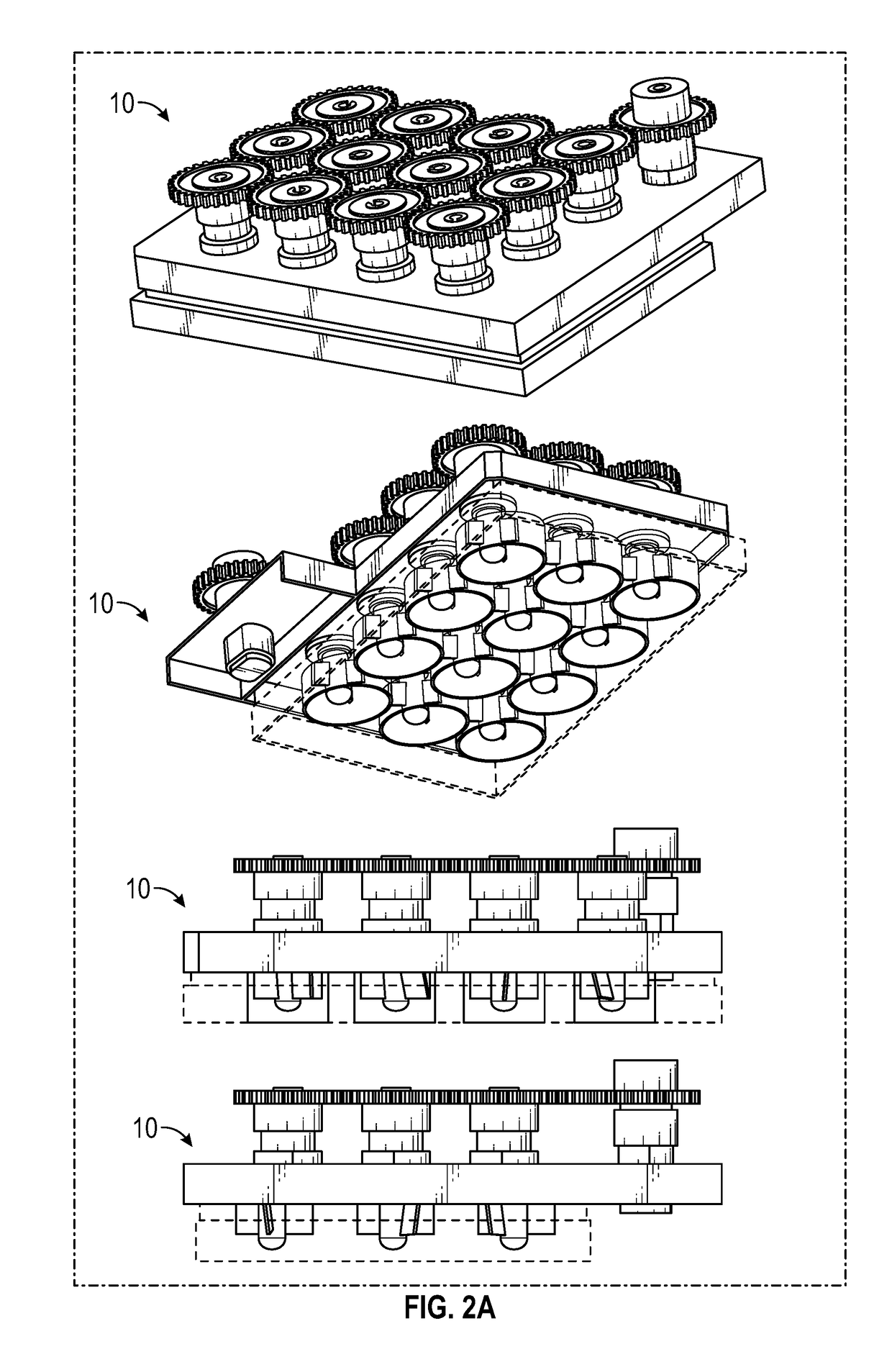Cell culture system and method of use thereof
a cell culture system and cell culture technology, applied in the field of cell culture, can solve the problems of limiting its use, requiring a large amount of space, requiring a large volume of cell culture media, and 50 to 200 ml of cell culture media, and can be extremely costly
- Summary
- Abstract
- Description
- Claims
- Application Information
AI Technical Summary
Benefits of technology
Problems solved by technology
Method used
Image
Examples
example 1
Generation of Organoids
[0091]This example illustrates culture of cells using the culture system according to FIGS. 1-11 to gerenate organoids.
[0092]The culture system allows tissue organoids to grow uniformly in complete 3D suspension. This feature allows the organoids to undergo their patterning free of interaction with the substrate below, avoiding contact friction that can shear the organoids and can affect the development of the organoids.
[0093]The culture system was successfully used to develop a highly-reliable protocol to generate human induced pluripotent stem cell-derived organoids patterned for cerebral cortex, midbrain, hypothalamus and hippocampus.
[0094]Different brain regions were generated using the 12-well culture system (data not shown). After 30-85 days of differentiation, iPSCs differentiated into 3D aggregates with characteristic features of different brain regions.
[0095]Culture conditions were systemically tested to optimize protocols. Additionally, screening was...
example 2
Brain-Region-Specific Organoids Using Mini-Bioreactors for Modeling ZIKV Exposure
[0097]Cerebral organoids, three-dimensional cultures that model organogenesis, provide a new platform to investigate human brain development. High cost, variability, and tissue heterogeneity limit their broad applications. Here, we developed a miniaturized spinning bioreactor (SpinΩ as shown in FIGS. 1-11) to generate forebrain-specific organoids from human iPSCs. These organoids recapitulate key features of human cortical development, including progenitor zone organization, neurogenesis, gene expression, and, notably, a distinct human-specific outer radial glia cell layer. We also developed protocols for midbrain and hypothalamic organoids. Finally, we employed the forebrain organoid platform to model Zika virus (ZIKV) exposure. Quantitative analyses revealed preferential, productive infection of neural progenitors with either African or Asian ZIKV strains. ZIKV infection leads to increased cell death ...
example 3
ZIKA-NS2A Reduces Cortical Neural Stem Cell Proliferation and Disrupts Adherens Junction Formation
[0197]Zika, but not Dengue, virus NS2A protein disrupts cortical neurogenesis. Zika virus (ZIKV)-induced microcephaly represents a global health emergency. ZIKV infects neural stem cells (NSCs), but how ZIKV interacts with the NSC host machinery to impact brain development is unknown. Here, by systematically introducing individual proteins encoded by ZIKV into radial glia cells in embryonic mouse cortex, we show that expression of ZIKV-NS2A, but not Dengue virus NS2A, leads to reduced proliferation and depletion of NSCs. We mapped NS2A protein-interactomes across the human proteome. Interestingly, ZIKA-NS2A interacts with and destabilizes the adherens junction complex, resulting in impaired adherens junction formation in embryonic mouse cortex. Similarly, ZIKA-NS2A expression leads to reduced radial glia cell proliferation and adherens junction deficits in human forebrain organoids. Tog...
PUM
 Login to View More
Login to View More Abstract
Description
Claims
Application Information
 Login to View More
Login to View More - R&D
- Intellectual Property
- Life Sciences
- Materials
- Tech Scout
- Unparalleled Data Quality
- Higher Quality Content
- 60% Fewer Hallucinations
Browse by: Latest US Patents, China's latest patents, Technical Efficacy Thesaurus, Application Domain, Technology Topic, Popular Technical Reports.
© 2025 PatSnap. All rights reserved.Legal|Privacy policy|Modern Slavery Act Transparency Statement|Sitemap|About US| Contact US: help@patsnap.com



